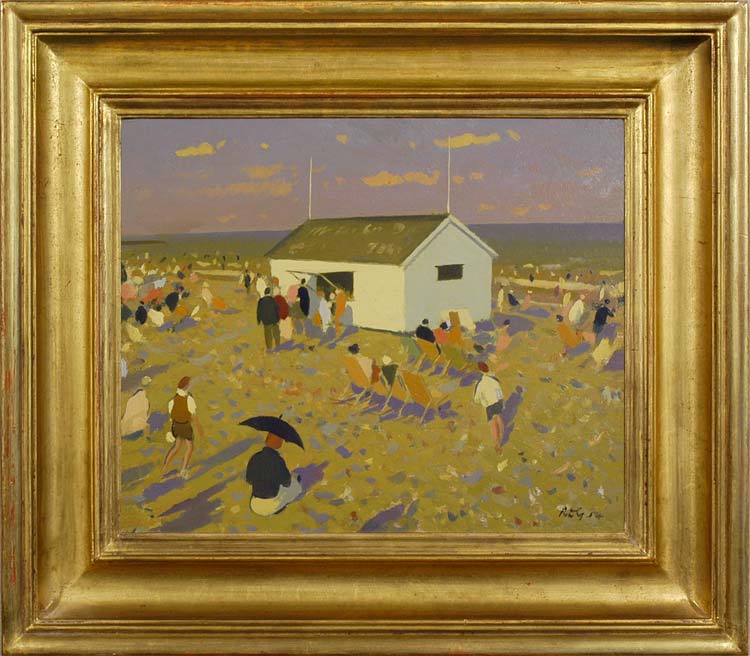Tea hut illustrates Greenham’s trick of depicting a scene from a raised viewpoint, from which he can observe and transcribe the patterns of movement and the play of shade in his chosen scene. Here, the beach life of the 1950s comes to vivid (but tranquil) life around the white hub of the tea kiosk, with the serried purple shadows of people and deckchairs opening a bold diagonal path towards the open stretch of the North Sea. The roseate and mauve tones conjure the late summer light, as afternoon slips into evening. This is an archetypal image of the English seaside, to set alongside the Deauville scenes of Bonington and Monet.
Biographical details
Robert Duckworth Greenham (1906-76) was born in Streatham, the elder brother of Peter Greenham R.A. He trained at the Byam Shaw School of Art and then at the Royal Academy Schools (1926-29), where he was awarded a Landseer Scholarship, Creswick Prize, Silver Medal for painting, and the British Institute Scholarship.
He was a very versatile artist: as well as paintings, he produced etchings, prints, wood engravings and murals. He was perhaps most popular during the period when he was painting coastal and beach scenes, set mainly in Suffolk; other subjects included fêtes, regattas and other, generally outdoor, social occasions. These landscapes and other scenes are characterized by strong outlines and areas of flat colour, rather poster-like in style, where the shapes of deckchairs and parasols take on an almost abstract life. In the 1930s and ’40s Greenham made a series of portraits of actresses and film stars, including Greta Garbo and Jessie Matthews, inspired by cinema stills.
He exhibited regularly at the Royal Academy, New English Art Club and the London Group; at the Royal Society of British Artists and Royal Institute of Oil Painters (to both of which he was elected); the Royal Scottish Academy and the Royal Society of Portrait Painters, as well as many commercial galleries.
Works in public collections include Martita Hunt (after 1943), London, National Portrait Gallery (from the series of portraits of stars, inspired in this case by a photograph for Vogue of Hunt by Cecil Beaton); Portrait of E. Byford, 1928, Braintree District Museum; St Peter Port…, 1974, Guernsey Museums & Galleries.


